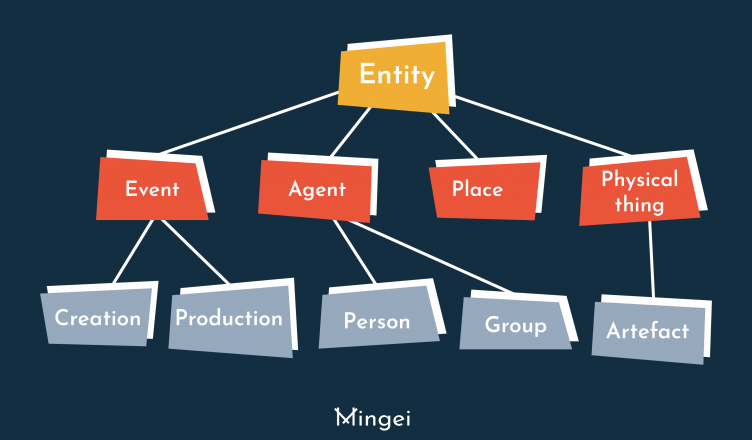The Mingei project aims to digitise and represent knowledge about the (in)tangible aspects of heritage crafts (HC). When we talk about knowledge representation, we need to rely on an ontology that helps us to describe the heritage crafts and tell the stories about them. In this context, we define ‘ontology’ as a vocabulary that provides mathematical definitions of all terms that are used within the domain of heritage crafts; for example events, tools or locations.
Mingei Crafts Ontology
CNR is developing the Mingei Crafts Ontology (CrO) and plans to use it to build stories that share the knowledge and artefacts of these crafts. You may think of this process as a timeline composed of events related to each other through temporal, causal and inclusion relations. Each event is also linked to its components such as tools, methods, people or locations.
To create this Crafts Ontology, luckily we don’t need to start from scratch. We are able to follow in the footsteps of Europeana, which already described cultural heritage artefacts in the European Data Model* (EDM). The EDM is defined with the scientific contribution of CNR, among others.
In addition to the EDM, CNR previously developed an ontology for representing narratives (as an extension of the CIDOC Cultural Reference Model**), which is the vocabulary used to describe events related to cultural heritage artefacts. Both these ontologies will be taken as reference for CNR’s attempt to define the Mingei Crafts Ontology, and they will be enriched with all the knowledge collected in the Mingei project.
Mingei Online Platform
CNR is also involved in the development of the Mingei online platform. In particular, CNR will develop software to help annotate knowledge that is related to digital objects that are created in this project to document heritage crafts (i.e. motion capture). Additionally CNR will work on a semi-automatic tool that will help construct, manage and visualise those previously mentioned narratives.
Up until now, CNR has been working with FORTH on the definition of the software architecture of the Mingei online platform. Furthermore, CNR participated to the meeting with the Haus der Seidenkultur to capture the requirements on the representation of knowledge concerning the process of silk weaving and the documents about that knowledge.
*The European Data Model (EDM) is a new proposal for structuring the data that Europeana will be ingesting, managing and publishing. The Europeana Data Model is a major improvement on the Europeana Semantic Elements (ESE). Its aim is to avoid the use of different data standards within the different heritage sectors.
**The CIDOC Conceptual Reference Model (CRM) provides definitions and a formal structure for describing the implicit and explicit concepts and relationships used in cultural heritage documentation. The CIDOC CRM is intended to promote a shared understanding of cultural heritage information by providing a common and extensible semantic framework that any cultural heritage information can be mapped to.

